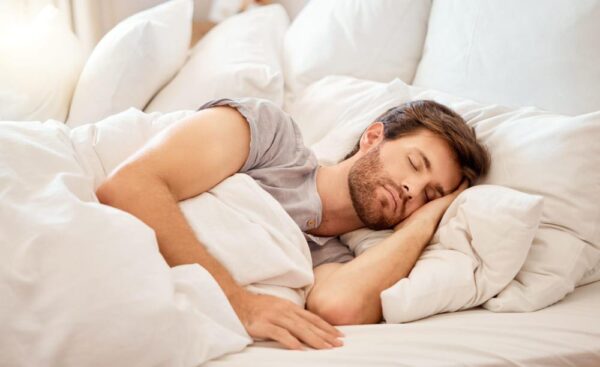
One of the basic necessities of life is sleep and once this is interfered with; then you are as good as dead. The sleep study test commonly known as polysomnography is perhaps the most useful instrument in diagnosing sleep disorders. This test gives a detailed overview of the general sleep pattern to detect different forms of sleep disorders and assist in correct management of the same.
Types of Sleep Disorders
- Sleep Apnea
- Insomnia
- Restless Legs Syndrome (RLS)
- Narcolepsy
Components of a Sleep Study Test
Electroencephalogram (EEG): Records the electrical activity of the brain in order to understand a number of sleep phases including Rapid Eye Movement (REM) and non-REM sleep.
Electrooculogram (EOG): Stores eye movements which are extremely important in the portrayal of the REM section of the sleep cycle.
Electromyogram (EMG): Records the contraction and relaxation of muscles mainly at the chin and legs so that if the sleeping pattern is disturbed by movements or contractions, it can alert the user.
Electrocardiogram (ECG): Monitors heart rate related to the rhythm or any irregularity pertaining to sleep related cardiac issues.
Respiratory Effort Sensors: Check the work rate with reference to the amount of chest and abdominal movements in what a person is doing.
Airflow Sensors: Feel how air passes through the respiratory system mainly through the nose and mouth and look for any moments of breathing arrest.
Pulse Oximetry: Checks blood oxygen to see if it falls during some of the apneas or hypopneas which are observed.
Snore Microphone: Can make a recording of the snoring sounds to determine whether the patient is suffering from sleep apnea and other disorders.
In-Lab vs. Home Sleep Study Test
In-Lab Sleep Study: This test is usually done in a sleep laboratory, and the patient is under the supervision of a sleep technician to confirm that all equipment is well set and to monitor the patient all through the night. It yields the most thorough information about the condition and is regarded as the benchmark in diagnosing complicated sleep disorders.
Home Sleep Study: This option is quite flexible and easier to implement; a patient can self-administered this test from the comfort of their home. Home sleep tests generally record fewer variables which range from airflow, respiratory efforts, and blood oxygen levels. Despite this, they are useful when diagnosing moderate to severe obstructive sleep apnea.
Preparing for a Sleep Study Test
To ensure accurate results, patients should follow specific guidelines before undergoing a sleep study test:
Avoid caffeine and alcohol: They can alter one’s sleep-wake pattern and lead to changes into the test scores.
Maintain a regular sleep schedule: ensures rather typical sleep behavior during the study, if the child adheres to the regular bedtime schedules during the days prior to the test.
Follow usual bedtime routine: To avoid unnecessary rushing and stress, the patient should just go about their normal activities and get to bed in normal circumstances to get natural sleep.
The Testing Process
Before the test, patients get to the sleep lab or they install the home testing equipment as we have advised them. In a laboratory environment, a technologist secures all the sensors and tools to the patient. The patient gets encouraged to sleep as normally as they would do when they are not on the execution of the task. Throughout the night the various equipment measures the different physiological parameters, and such data is reviewed by sleep specialist.
Analyzing the Results
Apnea-Hypopnea Index (AHI): The normal AHI values lies between 5-15 which would mean that the individual suffers from mild sleep apnea, values between 15-30 mean that the patient has moderate sleep apnea while values above 30 indicates severe sleep apnea.
Sleep Stages: Examining the different stages of sleep assists in determining changes in the structure of sleep that include the existence of delayed or reduced deep sleep or REM sleep.
Oxygen Desaturation: Counts the rate of oxygen desaturations necessary for sleep apnea diagnosis.
Treatment and Management
Therefore, after the completion of the sleep study test, the sleep specialist will then advise the patient on the best remedy to take. These may include:
Lifestyle Changes: Maintaining healthy body weight, saying no to alcohol and changing the position of sleep can help cure mild sleep apnea.
Continuous Positive Airway Pressure Therapy: An apparatus that uses continuous pressure of air to in order to open the airways usually used in cases of moderate to severe obstructive sleep apnea.
Medications: Taken with the intention to lessen the described symptoms and to enhance sleep quality in cases like RLS or narcolepsy.
Surgery: In some extreme conditions, the surgeon can choose to perform operations where obstructions or flowing abnormalities may be removed.
Conclusion
A sleep study test is an essential element of diagnostic applications when it comes to sleep disorders. Due to the specific analysis of sleep and body functions, it is possible to establish a correct diagnosis and create a proper treatment. If a person experiences some of the signs of a sleep disorder that was previously undiagnosed, he or she should consult a healthcare provider on the possibility of having a sleep study test. Such an association has the implication that early diagnosis and treatment of these diseases enhance your general well being and healthy future.